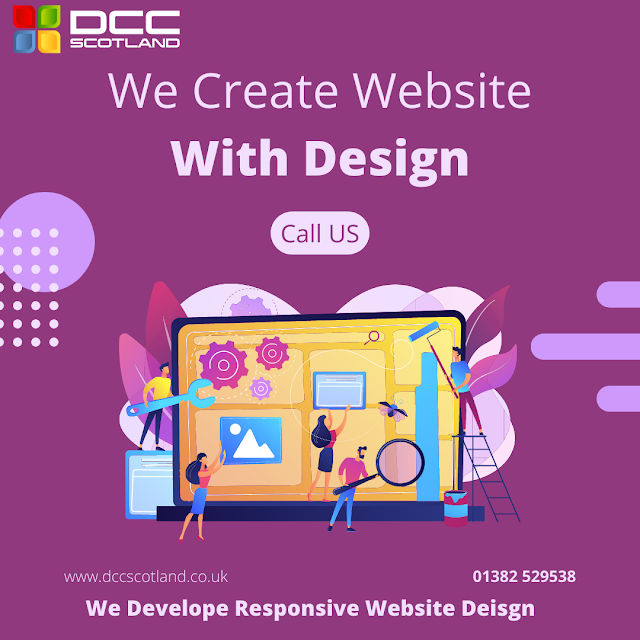What Is Web Design?
Web design Glasgow is a process of creating a website that strikes a balance between aesthetic and functionality. Websites must be aesthetically pleasing and immersive while also offering their audience exactly what they’re looking for.
Web designers use their technical expertise and knowledge to create a site that is both aesthetically appealing and easy to digest. They prioritize UI and UX design, layout, and color palettes.
HTML
HTML is a markup language that describes the structure of pages on the web. It uses a series of tags to identify elements on a page such as headers, paragraphs, links and images. Each tag has an opening and closing portion, with an attribute or set of attributes that determine how the element will appear on a web browser. For example, an h1> tag defines the main heading on your website, while the p> tag creates text content that lives within your website’s paragraphs.
When combined with other front-end technologies such as Cascading Style Sheets (CSS) and JavaScript, HTML is used to create dynamic web pages. It is a powerful tool that can be used to build a wide range of websites. It is also a foundational skill that can be used to learn other web design tools and techniques.
Unlike programming languages, which use a specific syntax to perform functions, HTML uses tags to define the structure of a web document. This means that a web designer can create websites without knowing the underlying programming language. This is one of the advantages of using HTML, which is why it is so important for anyone interested in web design to understand its basics.
HTML is not enough to make a website look beautiful or functional, so it is often combined with CSS and JavaScript. These technologies allow designers to add style and interactivity to web pages, making them more visually appealing and user-friendly. They can also be used to create complex web applications and mobile apps. For example, the website of Gloutir is a stunning example of how to combine HTML and CSS to create an immersive experience for visitors.
CSS
CSS is an important part of web design, allowing developers to create visually appealing and engaging websites. It is used to add color, shape, size, and other styling to HTML elements, which are then displayed on the website. It also allows for easy updates and can improve the load speed of a page. However, excessive use of CSS can cause problems for some users. Web designers need to be aware of this so that they can avoid potential problems.
The main objective of web design is to produce aesthetically pleasing features that capture the attention of users. Web design includes a wide range of skills, including graphic design, user interface (UI) and experience design, web development, and content creation. In addition to its aesthetic qualities, web design must be functional and responsive to a variety of devices. This requires developers to have good problem-solving skills.
Web design also aims to create a positive first impression for users. This is especially crucial for brands, as their websites represent their brand. In addition, the web design process should incorporate various other elements that are capable of enhancing the website’s visibility for both users and search engines.
Cascading Style Sheets (CSS) is a standard way to control the appearance of Web pages. It is often described as a “skin” that is applied over an HTML skeleton. Its syntax consists of curly braces that define the “selector”, or which HTML element the rules apply to, and then properties that determine what the selector will look like. For example, the code h1>p>/h1> indicates that the style will be applied to any occurrence of the h1> tag in an HTML document.
Flash
Using Flash web design, developers can create interactive and animated websites. These sites are designed to be user-friendly and visually appealing. This technology is also used in ad campaigns and games.
When the internet first became popular, it was dominated by big brand hyper commercial elitism. Websites were viewed as the new emergent artform and there was no shortage of festivals celebrating the best ones. This was partly because of the amazing visual creativity made possible by Flash web design.
The main drawback of Flash is that it takes a long time to download, especially for users on slower connections. In addition, the text display in Flash is noticeably less clear than in HTML. Many web designers are moving away from using Flash and preferring a simpler approach, such as HTML5.
Adobe’s Flash is a multimedia platform that can be used to add animation and interactivity to webpages. It also supports a variety of digital sound formats. In addition, it has a built-in scripting language called ActionScript that allows for more complex programming.
A common use of Flash in Web design is to create interactive movies and video games. This can be particularly useful for educational or scientific websites. However, it is important to remember that web design is primarily about content, not graphics.
Flash also has some limitations, such as its inability to support some types of audio. It is important to know these limitations when designing a website that uses Flash.
Ultimately, Flash is an outdated technology that should be replaced by more modern technologies. While it has its place in some applications, new web designs should be created with HTML5 media, which doesn’t require a plugin and has better prospects for future compatibility.
Mobile
Mobile web browsing is on the rise and it's time for website designers to rethink how their sites look and function. Traditionally, websites were tailored to desktop users (visitors using computers and large screens). However, with more people now viewing web content on their phones, tablets and other devices, it's important to create responsive sites that can adapt to the user's screen size and orientation. This is accomplished through an approach called responsive web design (RWD).
Responsive design enables a site to resize, shift and rearrange its layout and content to fit the size of the end-user's browser window. This is achieved by using fluid layouts, a technique that uses percentage-based values rather than fixed pixels to determine the width of each element. It also uses CSS media queries to modify how a website behaves when the browser window is resized. Other techniques include using flexbox layouts, which automatically expand or shrink items to fit the available space.
One example of a responsive web design is the New York Times' website, which shifts its layout to fit the size of the device used to access it. This makes the site easier to navigate and read on mobile devices, and it also mimics the newspaper's paper format.
Other techniques for creating responsive web designs include incorporating horizontal and vertical navigation options, hiding the navigation bar as the user scrolls down the page, and using alternate means of navigating a site, such as tap-based input or search icons. Designers should also be sure to keep the number of links and other information on a website to a minimum, as mobile devices have limited storage and data capacity.
Usability
Usability is the ability of users to achieve their goals with a design. It is a primary concern for designers of web sites, software applications, books, mechanical objects (such as doors and hammers) and information transfer objects (such as websites). Designers who focus on the usability of their designs often run them through a process called usability testing. This involves observing users using the product and asking them questions about their experience. It can provide valuable insights into how the design could be improved.
There are five main components of website usability, outlined by user advocate Jakob Nielsen: learnability, efficiency, memorability, error tolerance and satisfaction. The first of these, learnability, describes how easy it is for users to accomplish tasks with the design. The second, efficiency, describes how quickly users can achieve their objectives with the design. The third, memorability, describes how well the design can be remembered by users. The fourth, error tolerance, describes how easy it is for users to overcome obstacles or errors with the design. And finally, satisfaction, describes how pleasant users find working with the design.
Web site usability is important for many reasons, including its ability to improve the quality of visitors' interactions with your company's products and services. This, in turn, can have a direct impact on search engine optimization. In fact, Google's ranking algorithm now takes into account visitor satisfaction, meaning that a site with good usability is more likely to rank higher in search results than one that does not. This makes website usability an excellent investment for any company. Fortunately, improving the usability of a website is relatively inexpensive. For example, simply making the contact information on a site more visible will increase its usability and boost its rankings.




Comments
Post a Comment